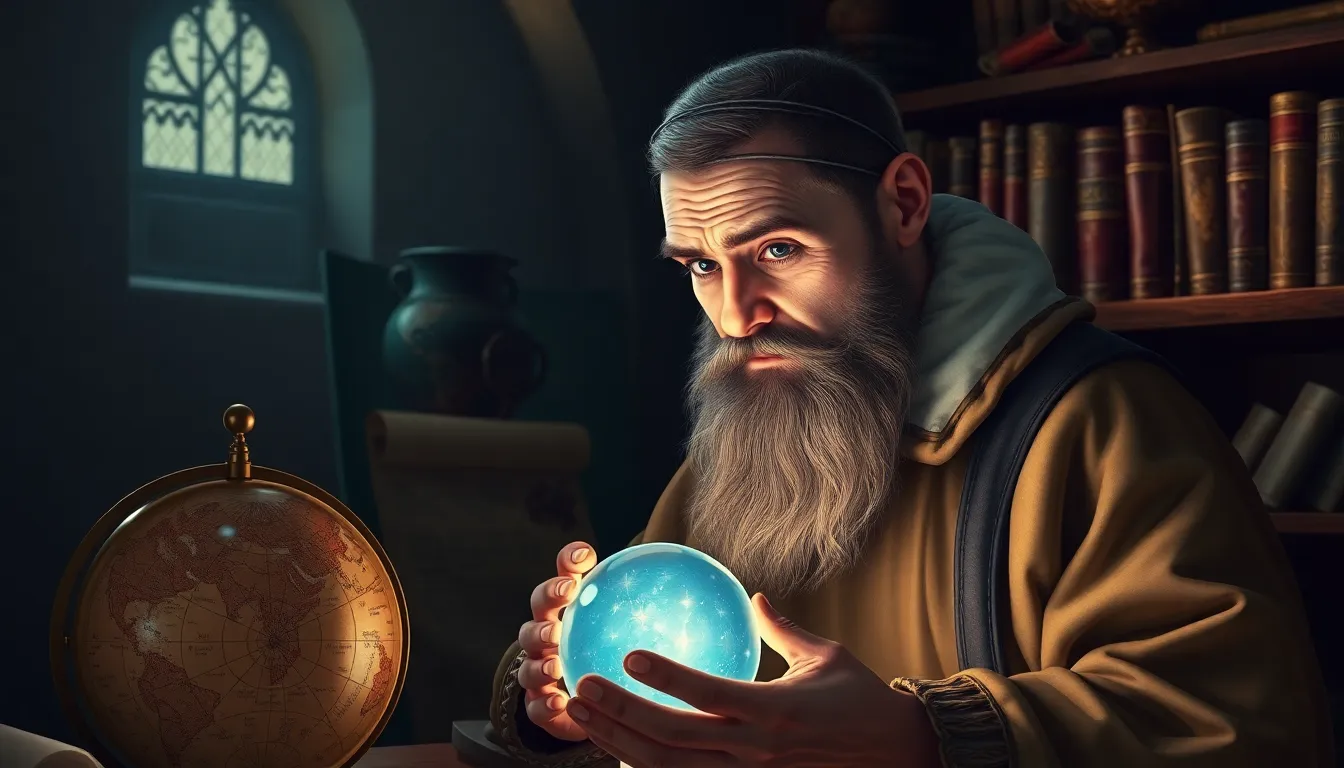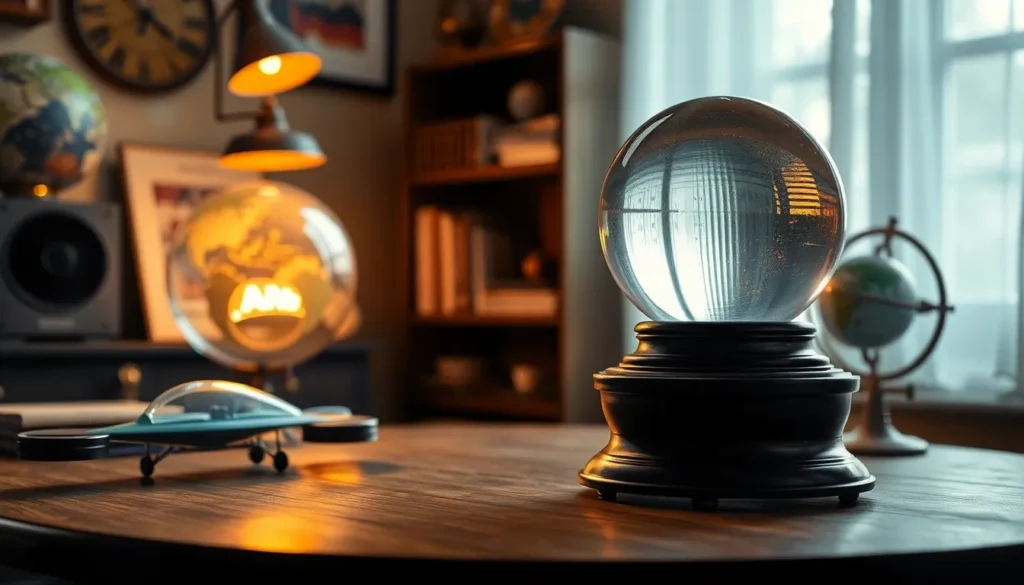Throughout history, people have gazed into crystal balls and made some wild predictions about the future. From flying cars to colonies on Mars, these forecasts often spark laughter more than awe. Yet, they reveal a fascinating blend of creativity and optimism that’s hard to resist.
Table of Contents
ToggleThe Fascination with Old Predictions of the Future
Old predictions of the future captivate audiences with their blend of wonder and whimsy. Many people find the tenacity of past visions particularly intriguing, especially when reflecting on inventions that never materialized. Predictions about flying cars, robotic servants, and interstellar travel highlight a common human desire for innovation. These ideas provide insight into societal hopes and fears during their respective eras.
Individuals often enjoy comparing these past forecasts with current technological advancements. For example, while flying cars remain elusive, advancements in drone technology resemble some of these predictions. Public fascination grows with each prediction that strays farther from reality, evoking nostalgia for simpler times.
Noteworthy predictions come from various sources, including writers, scientists, and visionaries. Jules Verne’s works, such as From the Earth to the Moon, sparked imaginations well before space travel became a reality. Similarly, Nikola Tesla envisioned a world transformed by electricity, forecasting wireless technology that now connects billions of people.
The charm of these outdated forecasts lies in their audacity. They serve as time capsules that reflect the aspirations of past generations. Even when predictions became outlandish, a sense of hope permeated through the whimsical ideas, revealing an intrinsic human spirit focused on tomorrow.
Old predictions capture a snapshot of cultural sentiments, showcasing changing attitudes toward technology and progress. Each forecast, regardless of accuracy, contributes to a rich narrative that continues to inspire curiosity.
Notable Predictions from History

Historical predictions tell fascinating stories about imagination and expectations for the future. Many thinkers and visionaries painted vivid portraits of what life might become.
Nostradamus: The Seer of Centuries
Nostradamus, the 16th-century French astrologer, gained fame for his cryptic prophecies. He published “Les Prophéties,” a collection of quatrains predicting significant world events. Some interpretations suggest he foresaw the rise of Napoleon and the Great Fire of London. His writings continue to spark curiosity and debates over their meaning. Over centuries, scholars and enthusiasts analyzed his verses for insights into potential futures. Nostradamus’ work encapsulates the blend of mysticism and historical context, reflecting society’s fascination with fate and the unknown.
Jules Verne: A Visionary Novelist
Jules Verne, a French author, contributed immensely to science fiction with his groundbreaking works. Novels like “Twenty Thousand Leagues Under the Sea” and “Journey to the Center of the Earth” introduced innovative technologies ahead of their time. His tales featured submarines and space travel long before they became reality. Verne’s detailed descriptions of machines and adventures captured the imagination of readers. His ability to blend storytelling with scientific possibility inspired subsequent generations of inventors. Each of his narratives served as a catalyst for technological aspirations and exploration, showcasing how literature can shape perceptions of the future.
Technological Predictions That Came True
Many old predictions about technology accurately anticipated future advancements. These forecasts showcase society’s evolving relationship with innovation.
The Rise of Personal Computers
Personal computers emerged as a pivotal prediction from visionaries like Alan Kay and Douglas Engelbart. They foresaw that computers would become integral to everyday life, enhancing productivity and creativity. By the late 1970s, companies like Apple and IBM made personal computers accessible. These devices revolutionized how individuals interacted with technology, fulfilling the early predictions. Users now rely on personal computers for work, communication, and entertainment, demonstrating the accuracy of past forecasts.
The Internet: A Global Connection
Predictions about a worldwide network for instant communication materialized with the birth of the internet. In 1962, J.C.R. Licklider described a network connecting global users. By the 1990s, the internet gained popularity, altering how people communicate and access information. The rise of websites, social media, and e-commerce underscored Licklider’s vision. Today, billions of users depend on the internet for social connections, professional networking, and knowledge sharing, confirming the foresight of earlier thinkers.
Predictions That Missed the Mark
Old predictions often spark curiosity, but some forecasts didn’t come close to reality. The following examples illustrate ambitious visions that faltered.
The Hype Around Flying Cars
Flying cars captured imaginations and inspired optimism about future transportation. Numerous inventors, like Henry Ford, touted this innovation as a symbol of progress in the 20th century. Public excitement surrounded prototypes, leading many to believe these vehicles would transform daily commutes. Despite advancements in drone technology, flying cars have yet to materialize as practical solutions. Regulatory challenges, safety concerns, and technical limitations stifle development. Aspirations for personal airborne vehicles remain unfulfilled, highlighting the gap between visionary ideas and present realities.
Misguided Predictions About Space Travel
Predictions regarding space travel often leaned heavily on imagination. Representative figures such as Wernher von Braun envisioned colonies on the Moon and Mars by the late 20th century. Enormous investments in space exploration led many to expect permanent human settlements on celestial bodies. The reality, however, diverged from these forecasts as costs and technological hurdles mounted. Challenges in sustaining life beyond Earth reveal the complexities of interplanetary living. Although robotic missions have thrived, human colonization remains a distant dream, reflecting the obstacles present in realizing grand ambitions.
Old predictions of the future serve as fascinating reflections of human creativity and aspiration. They reveal not just the hopes of past generations but also their fears and societal challenges. While some visions became reality, others remain whimsical dreams, reminding us of the unpredictability of progress.
As technology continues to evolve at a rapid pace, the lessons from these historical forecasts encourage a sense of wonder about what lies ahead. They inspire current and future innovators to think boldly. The interplay between imagination and reality shapes our understanding of the future, urging society to keep dreaming and exploring.

